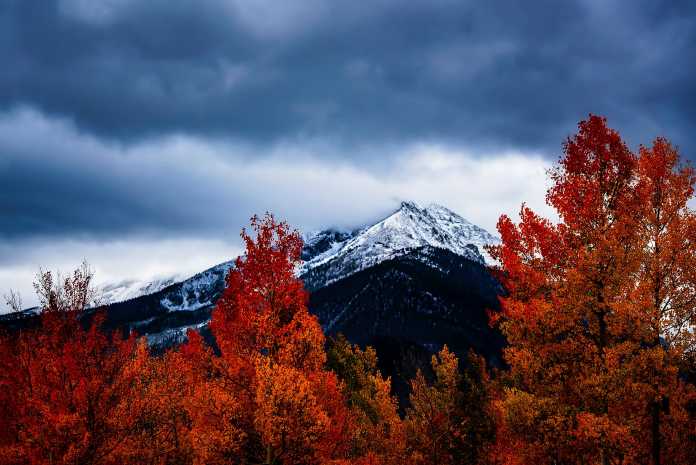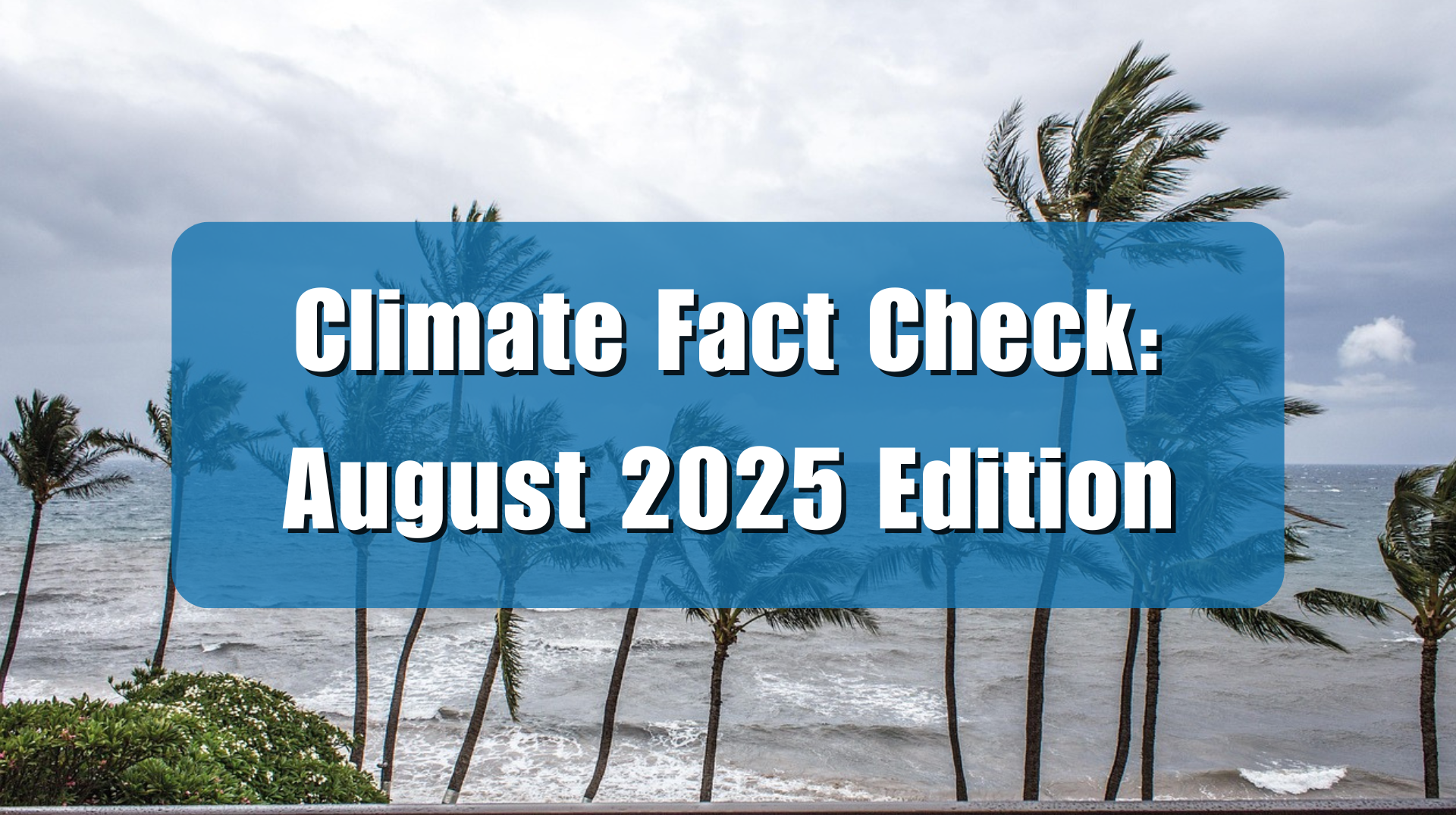The Denver Post recently ran an article claiming global warming will cause more severe wildfire seasons, as well as more severe floods in the Western United States. Data indicates that these claims are false; wildfires in the West are not due to climate change, and there is no trend of increasing or decreasing precipitation in the U.S.
The article, titled “Fire and rain: West to get more one-two extreme climate hits,” quotes researchers who published a study analyzing climate model “fire weather” simulations and precipitation projections alongside presumed continued climate change.
The Denver Post writes:
“The one-two punch of nasty wildfires followed by heavy downpours, triggering flooding and mudslides, will strike the U.S. West far more often in a warming-hopped world, becoming a frequent occurrence, a new study said.”
It is first vital to point out these claims aren’t based observations or recorded data but rather climate model projections of future fire and flood weather conditions, using the same models and warming scenarios that fail to replicate current and past temperatures. Climate Realism has repeatedly demonstrated that climate models are flawed and their projections cannot be trusted, here, here, and here, for example.
The study authors themselves admitted they used modeled “worst-case” warming scenarios, which are highly unlikely to come to pass. To justify using extreme scenarios the researchers said they were “unable at the time to use simulations of more likely scenarios with some moderate emission reductions.” The researchers asserted even moderate warming scenarios would result in a “four-fold increase in fire and flooding” in the Pacific Northwest. They provided no evidence or supporting reasons to back this assertion, and there are none.
The Denver Post spoke to a scientist not involved in the study, who indicated global temperature and climate models may not work at the local level in the way the study is applying them. Despite offering this statement of caution, ever happy to toe the line, he then reverses himself and unscientifically says, “[s]till, the results make sense.”
Real world data shows these projections are implausible.
The American West and Pacific Northwest in particular, have been prone throughout history to dry and wet seasons due to the oscillating nature of Pacific weather patterns, called El Niño and La Niña. As described in Climate Realism articles here and here, for example, those weather patterns are completely natural, and occurred long before the industrial revolution. These cycles can last for years and there is no sign that they are being enhanced in severity.
Drought is a major factor for the ignition of wildfires. Data from the U.S. National Center for Atmospheric Research’s Palmer Drought Severity Index show that drought severity in the Southwest, including California and Colorado, has been largely stable over the past hundred years (Figure 1), but recent modest increase in drought conditions are well within the range of historic natural variability. This can clearly be seen using regional proxies going back hundreds of years in a 2007 E.R.Cook et al. study on North American drought (Figure 2), as detailed in this Climate Realism post here.
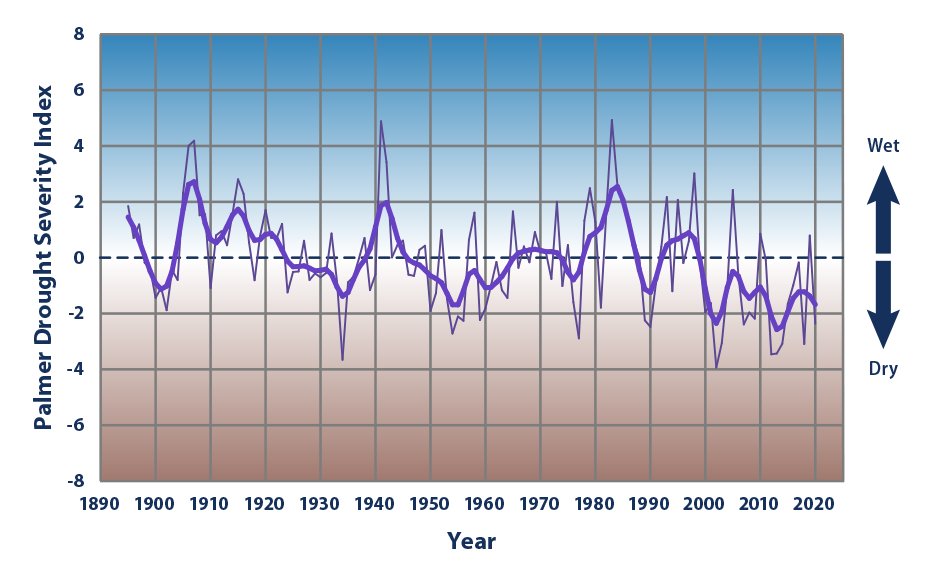
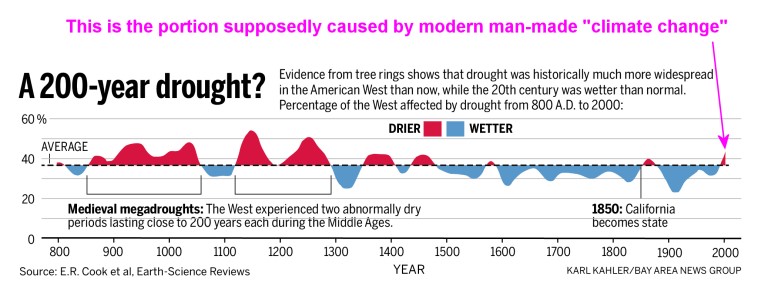
As reported in Climate at a Glance: Drought U.S. National Oceanic and Atmospheric Administration data displayed in Figure 3 below show that the United States recently underwent is its longest period in recorded history without at least 40 percent of the country experiencing ‘very dry’ condition. Over the past century’s warming there has been no sustained trend of lessening or worsening droughts.
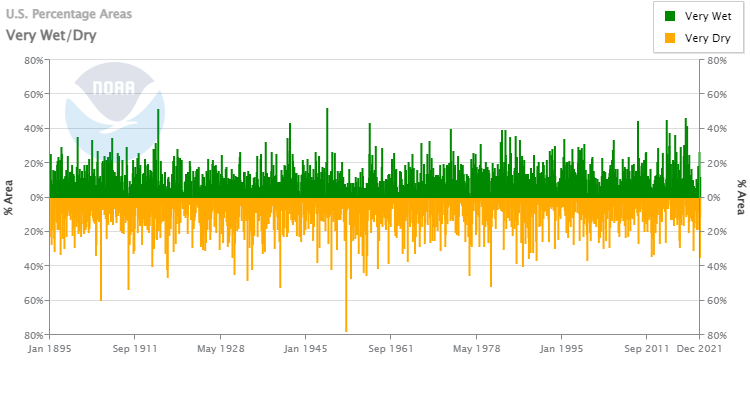
This data does not suggest that wildfire frequency or severity should increase due to drought conditions.
Climate at a Glance: Wildfires thoroughly debunks the claim that wildfires are on the rise in the United States, demonstrating in the chart below that these fires are much less severe than they were in the beginning of the 20th century, with only recent climbs.
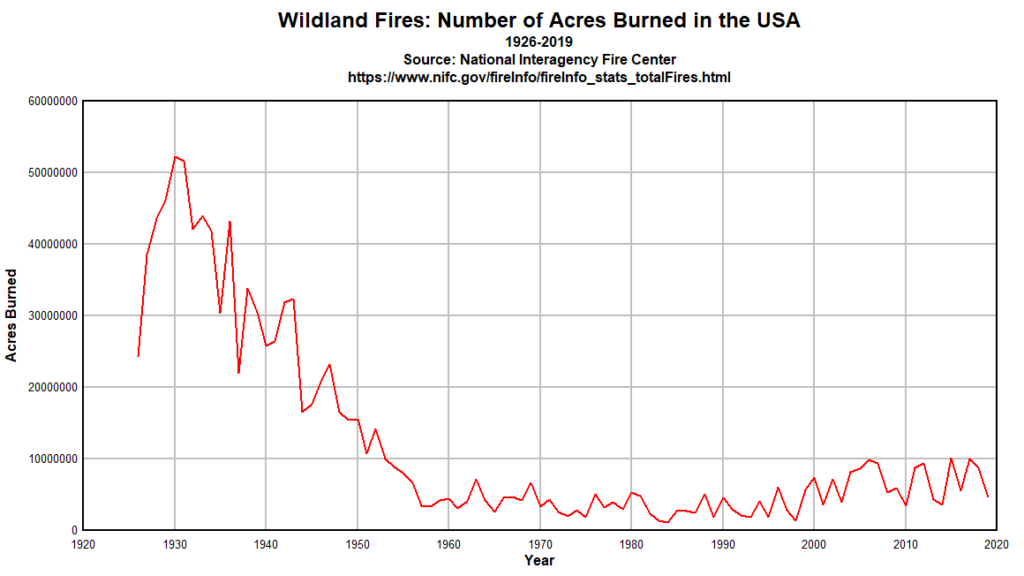
Recent upticks in uncontrolled fires in Western states like California, Washington, and Oregon, are most likely due to decades of poor forest management. State and federal governments have refused to take an active role in removing dry underbrush and dead trees for almost 40 years now, as explained in a Climate Realism article, here, leading to a dangerously high fuel load which can easily light in the right conditions.
Taken as a whole, the available observed data provides no reason for believing that the kind of modest warming the earth has experienced over the century will suddenly lead to catastrophic wildfire and flood conditions for the American West. The Denver Post article is long on unsupported claims and short on facts. Faulty computer model projections are no replacements for evidence and data on climate trends, and present trends aren’t alarming in the least.















